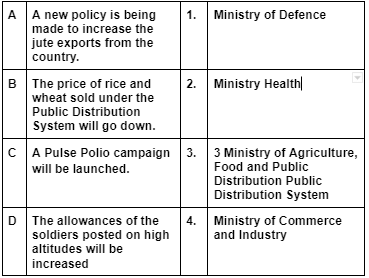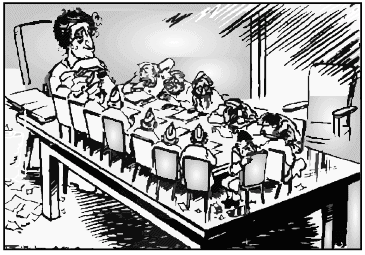Test: Working of Institutions (Term II)- 1 - Class 9 MCQ
10 Questions MCQ Test Online MCQ Tests for Class 9 - Test: Working of Institutions (Term II)- 1
State whether True or False:
A government order is also called an office memorandum.
State whether True or False:
A speaker is the Presiding officer of the Rajya Sabha.
| 1 Crore+ students have signed up on EduRev. Have you? Download the App |
The ________________ includes all the courts at different levels in a country.
A government formed by an alliance of two or more political parties is called a _______.
The President of India is elected by _______.
Match the following Column I with Column II:

Assertion (A) : The Government of India had appointed the Second Backward Classes Commission in 1979.
Reason (R) : It was headed by B.P. Mandal. Hence it was popularly called the Mandal Commission.
Study the given Picture carefully and answer the question that follows:
This picture is related to which of the following.

A judge can be removed only when an __________ is passed separately by a two-third majority of members of each of the two houses of the Parliament.
The Second Backward Classes Commission in 1979 was headed by ________.
|
5 docs|319 tests
|

















